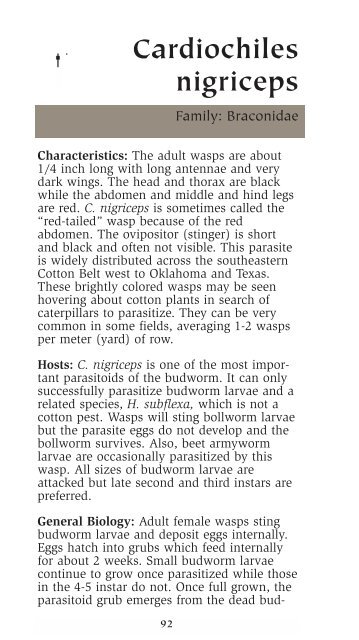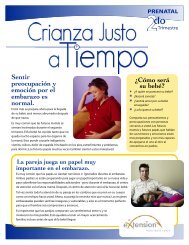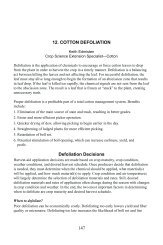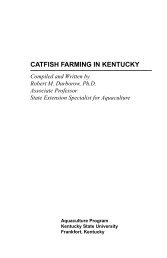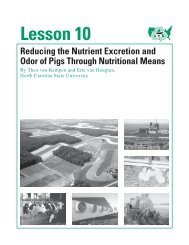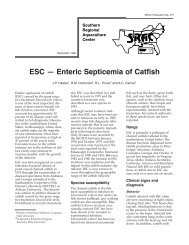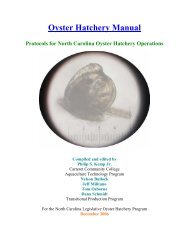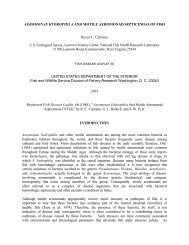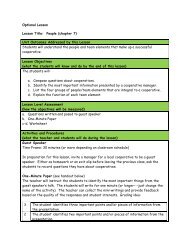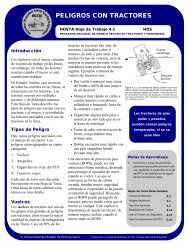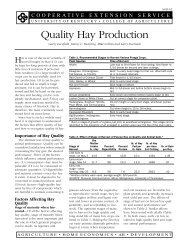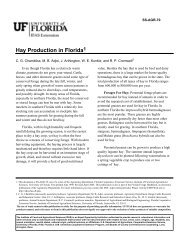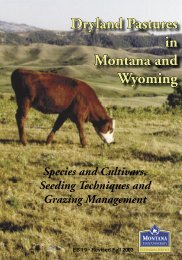Recognizing the Good Bugs in Cotton - Texas Is Cotton Country ...
Recognizing the Good Bugs in Cotton - Texas Is Cotton Country ...
Recognizing the Good Bugs in Cotton - Texas Is Cotton Country ...
You also want an ePaper? Increase the reach of your titles
YUMPU automatically turns print PDFs into web optimized ePapers that Google loves.
Cardiochiles<br />
nigriceps<br />
Family: Braconidae<br />
Characteristics: The adult wasps are about<br />
1/4 <strong>in</strong>ch long with long antennae and very<br />
dark w<strong>in</strong>gs. The head and thorax are black<br />
while <strong>the</strong> abdomen and middle and h<strong>in</strong>d legs<br />
are red. C. nigriceps is sometimes called <strong>the</strong><br />
“red-tailed” wasp because of <strong>the</strong> red<br />
abdomen. The ovipositor (st<strong>in</strong>ger) is short<br />
and black and often not visible. This parasite<br />
is widely distributed across <strong>the</strong> sou<strong>the</strong>astern<br />
<strong>Cotton</strong> Belt west to Oklahoma and <strong>Texas</strong>.<br />
These brightly colored wasps may be seen<br />
hover<strong>in</strong>g about cotton plants <strong>in</strong> search of<br />
caterpillars to parasitize. They can be very<br />
common <strong>in</strong> some fields, averag<strong>in</strong>g 1-2 wasps<br />
per meter (yard) of row.<br />
Hosts: C. nigriceps is one of <strong>the</strong> most important<br />
parasitoids of <strong>the</strong> budworm. It can only<br />
successfully parasitize budworm larvae and a<br />
related species, H. subflexa, which is not a<br />
cotton pest. Wasps will st<strong>in</strong>g bollworm larvae<br />
but <strong>the</strong> parasite eggs do not develop and <strong>the</strong><br />
bollworm survives. Also, beet armyworm<br />
larvae are occasionally parasitized by this<br />
wasp. All sizes of budworm larvae are<br />
attacked but late second and third <strong>in</strong>stars are<br />
preferred.<br />
General Biology: Adult female wasps st<strong>in</strong>g<br />
budworm larvae and deposit eggs <strong>in</strong>ternally.<br />
Eggs hatch <strong>in</strong>to grubs which feed <strong>in</strong>ternally<br />
for about 2 weeks. Small budworm larvae<br />
cont<strong>in</strong>ue to grow once parasitized while those<br />
<strong>in</strong> <strong>the</strong> 4-5 <strong>in</strong>star do not. Once full grown, <strong>the</strong><br />
parasitoid grub emerges from <strong>the</strong> dead bud-<br />
92


